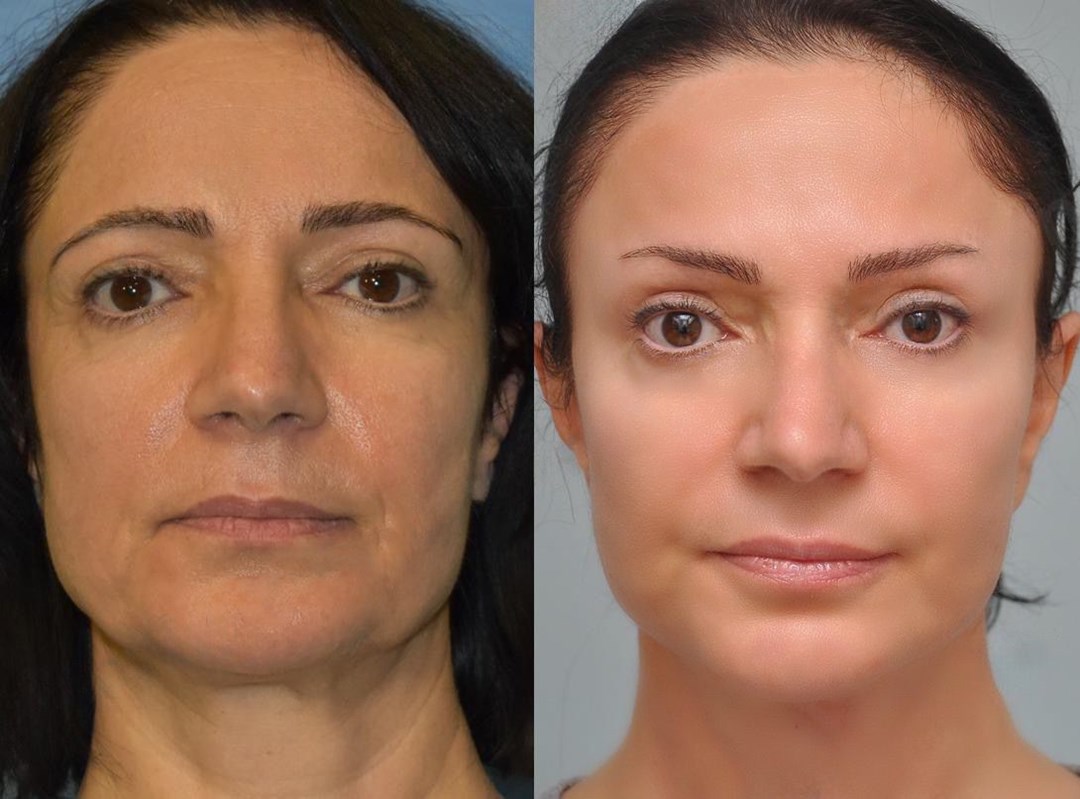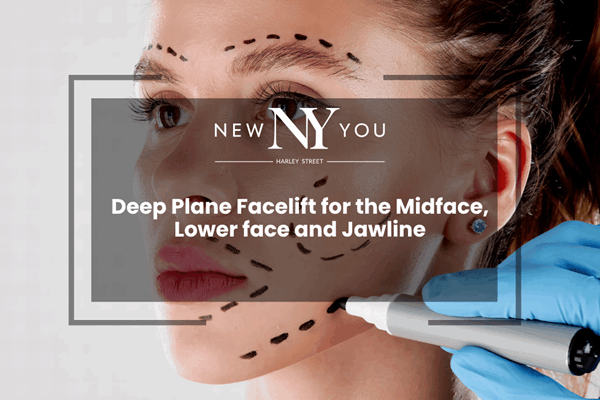How Long Does a Facelift Last?

As the whole purpose of a facelift is to reverse the signs of ageing, knowing how long it will last is very important.
As we age the face undergoes certain changes. The youthful “heart-shaped” face tends to become longer and loses its plump volume. The changes aren’t just limited to just skin sagging. There is a redistribution of the position of fat within the subcutaneous layer of the face, the ligaments that anchor the facial skin to the bones become more lax, the facial bones themselves atrophy (dissolve) in certain areas, the skin loses elasticity and the skin becomes thinner.
Knowing how these anatomical and physiological changes affect the appearance of the ageing face is crucial for the surgeon who performs facelift surgery and the auxiliary procedures that go with it.
A facelift, also known as rhytidectomy, is a cosmetic surgical procedure that aims to rejuvenate the face by addressing the key features of the ageing face. These are: wrinkles, sagging skin, loss of volume and jowls.
During the procedure, our expert facial surgeon Arda Küçükgüven makes incisions in inconspicuous areas, such as behind the ears or along the hairline. He then carefully lifts the skin from the underlying tissues. It is crucial that the surgeon has an intricate knowledge of facial anatomy including the position of the facial nerve as damage to this vital structure would lead to facial paralysis or fasciculations (unwanted twitching of facial muscles) . Once the skin is lifted and key anatomical structures identified and preserved Dr Küçükgüven tightens the underlying facial muscles and tissues. Excess skin is then removed, and the remaining skin is repositioned for a smoother, more youthful appearance. While a facelift can provide significant improvements, it does not halt the natural ageing process entirely. The best way to think about it is “re-setting the clock”
Factors Affecting Facelift Longevity
Several factors play a crucial role in determining how long the results of a facelift will last:
1. Age: The age at which you undergo a facelift can impact its longevity. Generally, younger patients may enjoy longer-lasting results as their skin is more elastic and resilient.
2. Genetics: Probably the most important factor. Your genetic makeup contributes to how your skin ages. If your family has a history of premature ageing, you may experience a shorter duration of facelift results.
3. Lifestyle Choices: Smoking, excessive sun exposure, poor diet, and other unhealthy lifestyle habits can accelerate the ageing process and diminish the longevity of your facelift. This is one of the few things that you can control. If you are going through the expense and downtime of having facelift surgery it is very important you eat healthily, use high-factor sun cream when under the sun and don’t smoke to make sure you get the best possible result.
4. Skincare Routine: A consistent and effective skincare regimen can help maintain the results of your facelift. Using sunscreen, moisturizers, and anti-ageing products can be beneficial. We also recommend taking collagen supplements during the perioperative period to help with healing.
5. Surgeon's Skill: The expertise and skill of your plastic surgeon are critical. Facelift surgery is a complex procedure. In choosing Arda Küçükgüven you are in the hands of a plastic surgeon with expert knowledge of facial anatomy, who has vast experience in maxilla-facial surgery as well as plastic surgery and a surgeon who has deviated his career to facial surgery. You could not choose a better surgeon.
Expected Duration of Facelift Results
On average, the results of a facelift can last anywhere from five to ten years. However, this is a rough estimate, and individual experiences can vary widely. Some patients may notice that their results persist beyond the ten-year mark, while others may see changes after a shorter period.
Maintenance and Touch-Ups
To extend the longevity of your facelift, consider periodic maintenance and non-surgical treatments. Dermal fillers, Botox injections, and laser treatments can help maintain a youthful appearance between facelifts. We offer all these treatments at our bespoke clinic at 101 Harley Street.
Conclusion
The duration of a facelift's results depends on various factors, including age, genetics, lifestyle choices, and the skill of your surgeon. While the effects can last upto ten years, it's essential to understand that a facelift does not stop the ageing process entirely. It merely resets the clock. To maintain a youthful appearance after facelift surgery it’s important to adopt a healthy lifestyle and consider non-surgical treatments or “tweekments” as needed. Come and find out more about turning back the clock of ageing by having a consultation with our expert facial surgeon Arda Küçükgüven.
More news & articles

What is Recovery Like From a Deep Plane Facelift?
The deep plane facelift recovery journey follows a predictable timeline that helps patients understand what to expect during their healing process. During the initial 24-48 hours, patients experience the most intensive recovery period, requiring dedicated rest and careful monitoring. Swelling peaks around day three, with significant improvement noticed by the end of the first week.
Most patients see dramatic improvements in swelling and bruising between weeks two and three. By week four, approximately 75% of swelling has typically resolved, though subtle changes continue for several months. The complete healing process typically spans 6-12 months, during which time incisions fully mature and final results become apparent.

Otoplasty (Ear Pinning, Ear Reshaping Surgery) (Ear Correction Ear Repositioning)
Otoplasty, also known as ear correction surgery, is a sophisticated surgical procedure designed to improve the appearance of prominent or misshapen ears. This transformative treatment encompasses both ear pinning and reshaping techniques, allowing surgeons to address various aesthetic concerns. At our Harley Street clinic, we specialise in both traditional ear pinning, which reduces the angle between the ears and head, and comprehensive reshaping procedures that can modify the ear's structure. The procedure is suitable for both children (typically over 5 years old) and adults who are concerned about protruding or asymmetrical ears. Ideal candidates should be in good general health and have realistic expectations about the outcome. The surgery can address various concerns, including prominent ears, asymmetry, abnormal ear folds, and ears affected by injury or birth defects.

Deep Plane Facelift for the Midface, Lower face and Jawline
The Deep Plane Facelift represents the pinnacle of modern facial rejuvenation techniques, offering comprehensive restoration of facial aesthetics through advanced surgical methodology. This sophisticated procedure addresses multiple layers of facial tissue, providing more natural and longer-lasting results compared to traditional facelift approaches. By targeting the deep muscular aponeurotic system (SMAS) layer, surgeons can achieve remarkable improvements in facial contours whilst maintaining natural expression and movement. The procedure's scientific foundation lies in its unique approach to facial anatomy, working with rather than against the natural tissue planes. This results in reduced tension on the skin, minimising the risk of the dreaded 'pulled' appearance often associated with conventional facelifts. The technique particularly excels in addressing mid-facial sagging, nasolabial folds, and jowl formation - common concerns that traditional facelifts may not adequately address.



